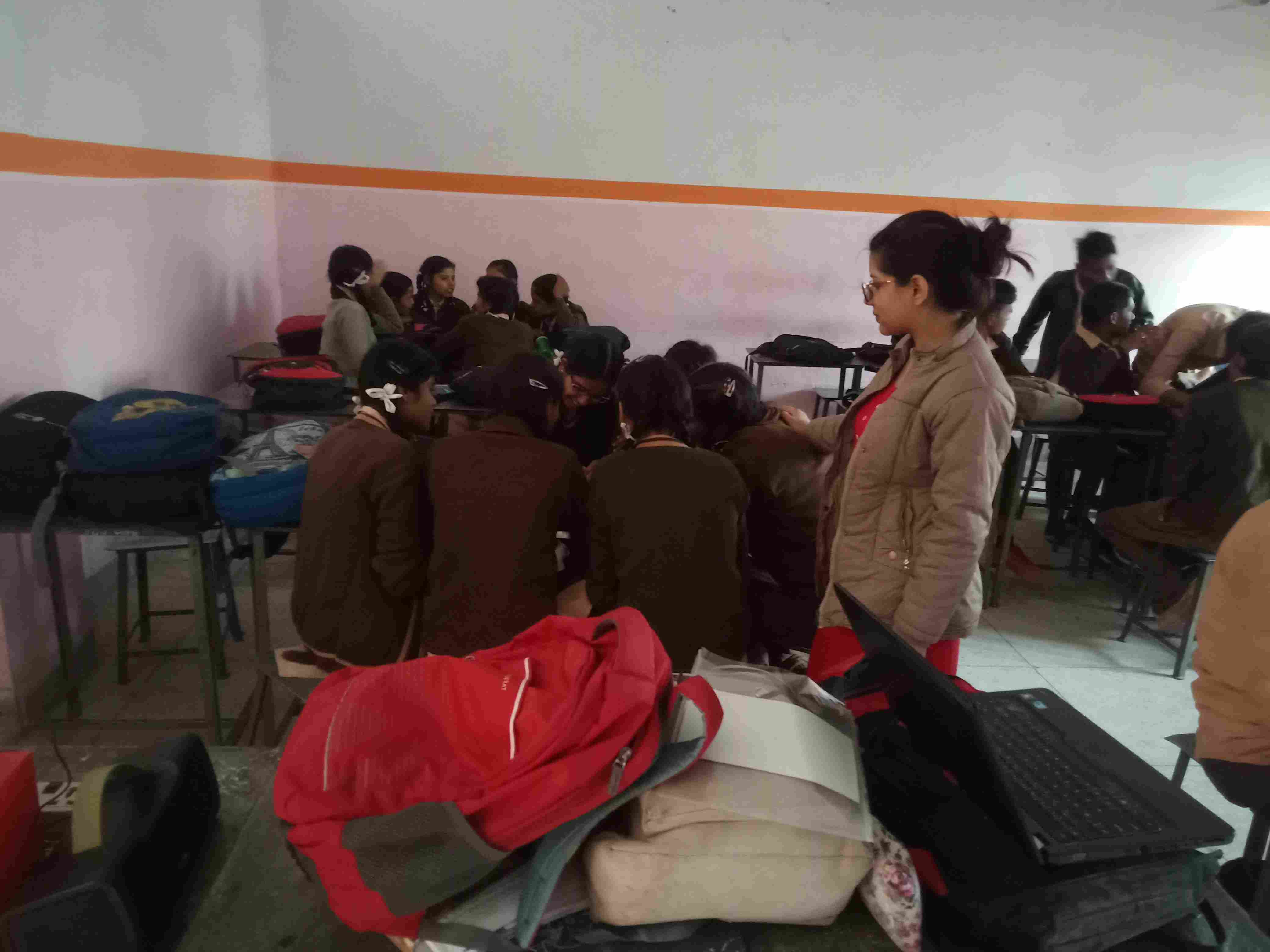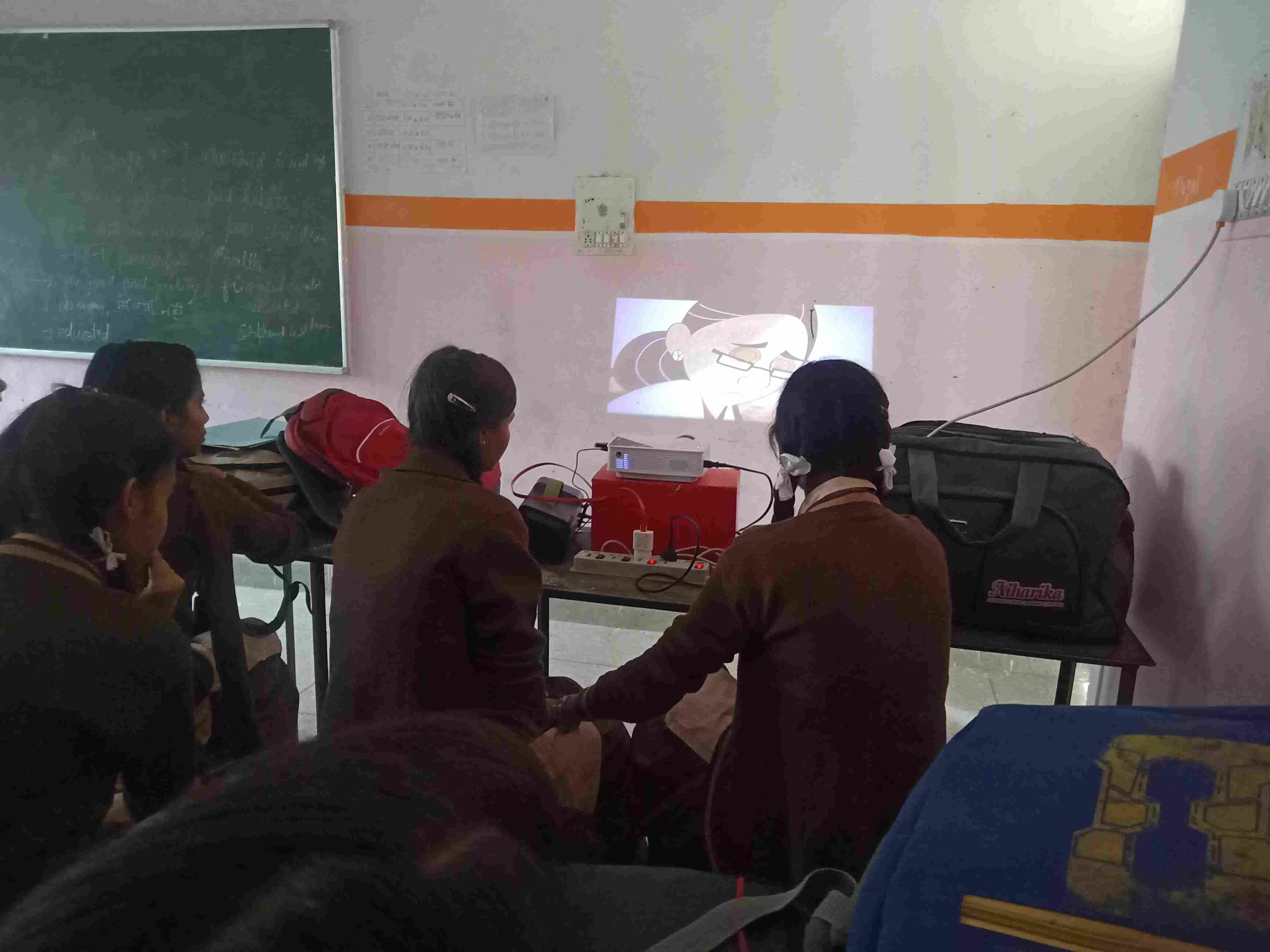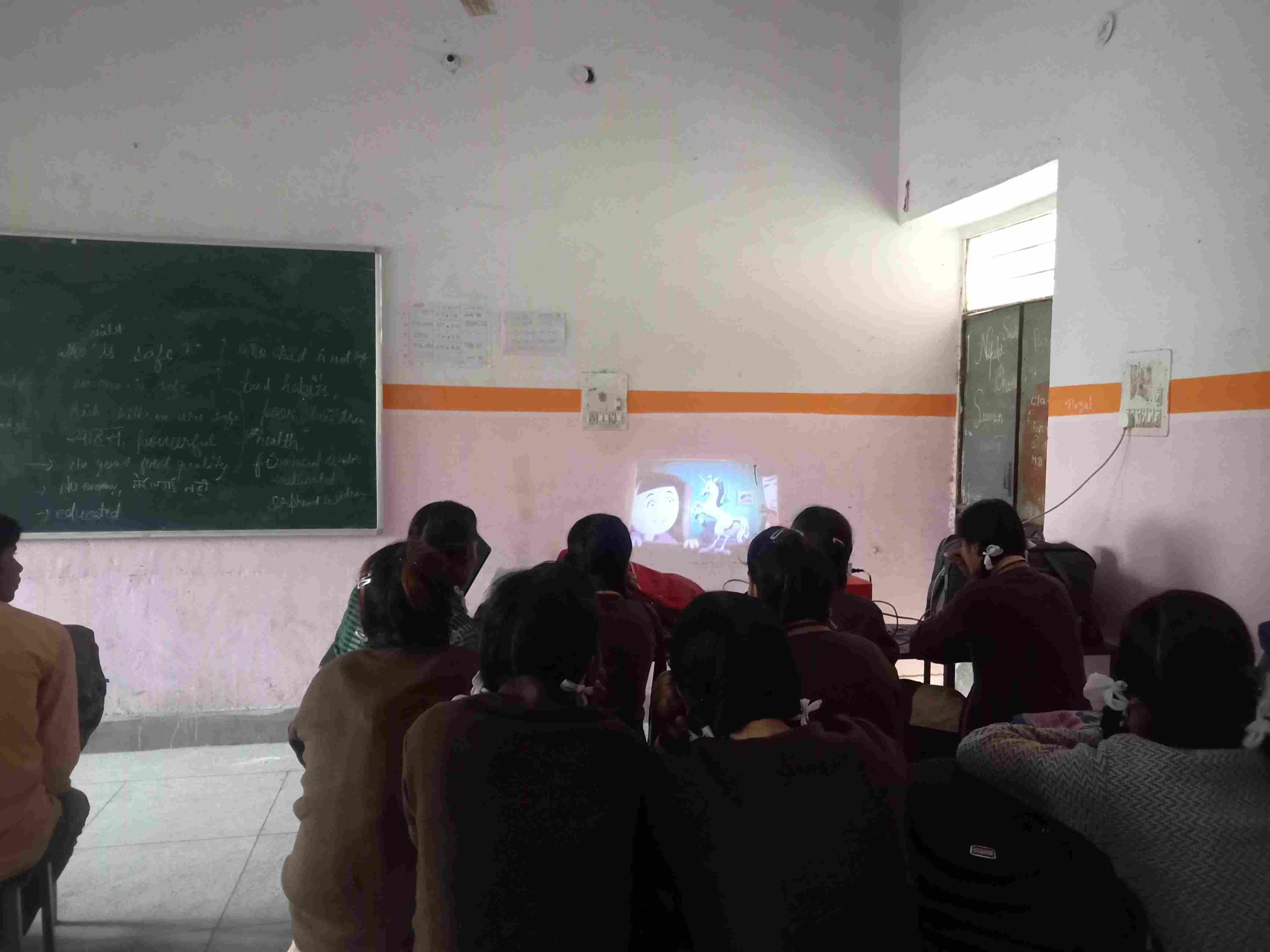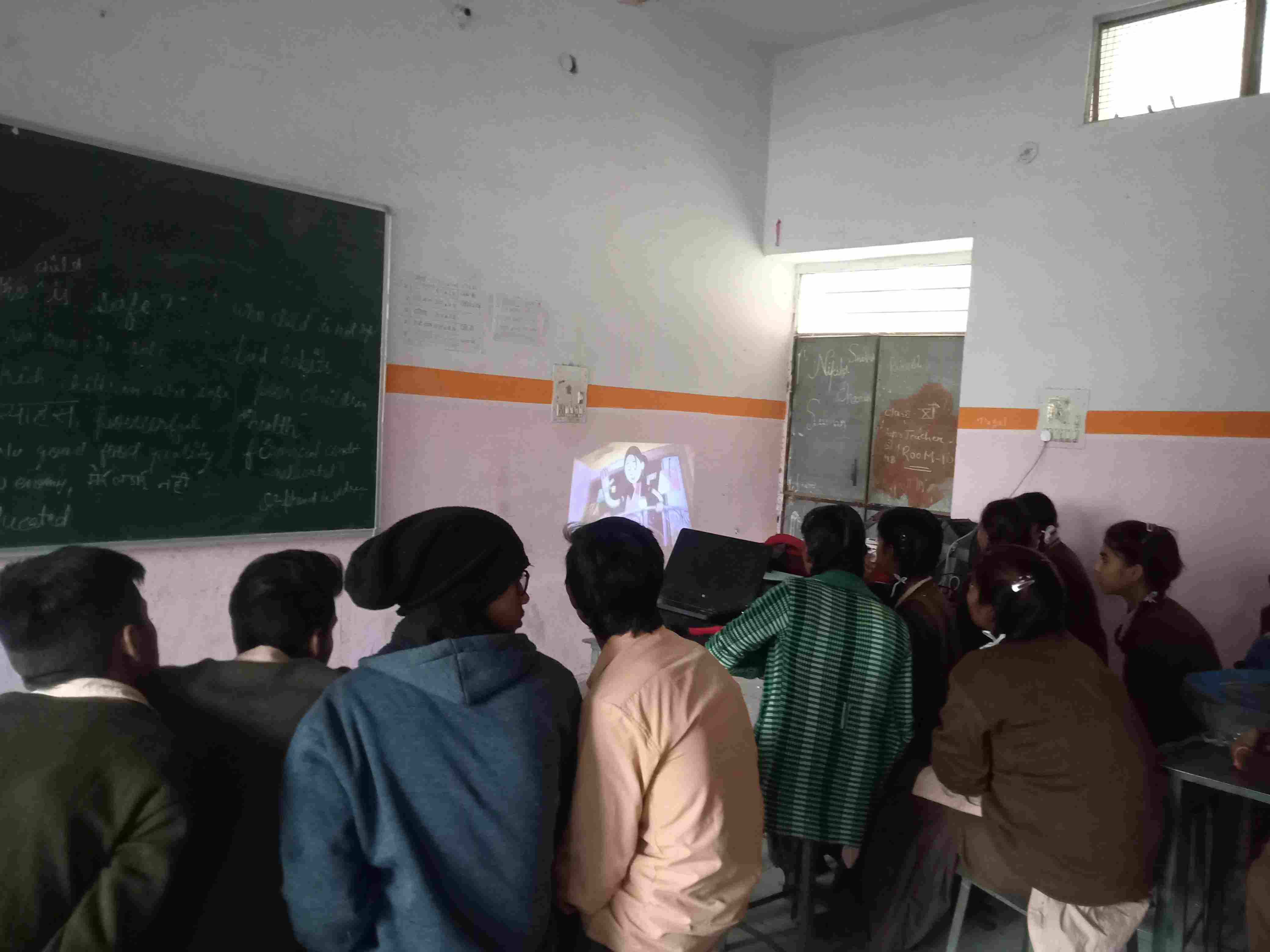Awareness session on Violence Against Children and Its Effects was conducted at Govt. Sr. Sec. School, Mansarovar, Jaipur, Rajasthan, in January 2020.
Violence with children and its impact
Summary of violence with children
The definition of violence- The UNCRC considers violence to happen when someone's mind is hurt as well as their body.
Forms of violence by UNCRC: Mental violence, Physical violence, Sexual violence, Violence through information and communication technologies, Violence in mass media, Self-harm, torture or inhuman and degrading treatment or punishment.
ARTICLES :
Article 24 - Children and young people should be protected from the traditional practices that are violent against them. Article 25 - If a child or a young person is living away from home, they should be regularly checked upon, in case, they are not safe. Article 28- No one should be violent against children or young people at school. Article 34 - Children and young people shouldn't be exploited sexually. Article 37 - Children and young people shouldn't be punished in a cruel or degrading way. Article 38- There are rules relating to the involvement of children and young people along with the armed forces. Article 39 - Children and young people should be helped to recover, if they are survivors of violence.
Socially accepted forms of violence, such as shouting at children and corporal punishment, are often not perceived as violent behavior. However, studies indicate that the majority of child abuse occurs at the hands of people known to the child, rather than by strangers. The effects of violence on children can vary based on their age and developmental stage. Exploitation, violence, abuse, and neglect can harm children emotionally, socially, and within their family relationships, and can lead to loss of self-respect, trust, self-esteem, and the joy of childhood. It corrupts, kills, and destroys children, and debases our societies. As parents, it is our primary responsibility to protect our children from violence. Violence against children is unacceptable in all settings, including the home, schools, care or justice institutions, and the community. Parents who resort to violence in their upbringing will not learn alternative methods of educating and dealing with their children.
Pre-session assessment
Questions with the groups:
"Which children are considered safe?" - Some students answered that no child is completely safe, while others stated that rich, powerful, courageous, educated children who are not involved in any negative activities are safer. "Which children are considered unsafe?" - Some students responded that children who engage in harmful activities are unsafe, while others mentioned that children who are poor, uneducated, or orphans are at greater risk. "What factors determine a child's safety?" - Students answered that factors such as proper education, nutrition, stable home environment, good parenting, and moral values play a significant role in making a child safe. On the other hand, the absence of these factors can make a child unsafe.
Activity conducted during the session
We divided into 4 groups and each group was tasked with crafting a hypothetical story about the various forms of violence, including physical violence, emotional violence, sexual violence, and exploitation.
Story on physical violence: Once upon a time, there was a family with four members. The parents were kind and the elder son was also good-natured, doing well in life. However, the younger son was involved in bad habits such as spending his parents' money recklessly, drinking alcohol, harassing girls on the streets, and physically assaulting those who defied him. One day, his parents caught him in the act and severely punished him. This only made his situation worse and he spiraled into further trouble. In the end, he turned his life around and became a better person, earning respect from others through hard work.
Story on emotional violence: There was a boy named Sohan who was known for his love of making people happy and his sense of humor. Due to his family's financial difficulties, his parents were often frustrated and took out their anger on him. Sohan tried to cheer them up but was met with constant criticism. They called him crazy for always smiling, and told him to focus on his studies. Despite his efforts to communicate his feelings, his parents never seemed to understand him. The emotional toll of this mistreatment left Sohan feeling lonely and unvalued.
Story on sexual violence: A 15-year-old girl was coming home from school one day when some boys tried to accost her on the road. Despite her attempts to fend them off, they persisted in following her. This became a daily occurrence. One day, the boys managed to assault her and filmed the abuse, spreading the video widely. The girl was blamed for the attack and was shunned by her community. But she refused to give up and pressed charges against the attackers. Despite facing inappropriate questioning during the trial, she held onto her self-belief and won the case. Now she works to help other survivors of sexual violence and encourages them to fight for justice.
Story on neglect: A child was ignored and mistreated by his family. They forbade him from working and excluded him from family events. Whenever he tried to speak up, they dismissed him as a child with no knowledge or opinions. The elder children in the park also wouldn't let him play cricket with them. When he asked to go out with his family, they told him to focus on his studies and stay at home. This constant neglect left him feeling lonely, with low self-esteem and a lack of self-worth.
Common Forms of Violence: Girls are often subjected to sexual violence, while boys are more likely to experience physical violence. Children in refugee camps and those from marginalized communities are at a higher risk of experiencing violence.
Impact of Violence on Children: Experiencing violence can have serious impacts on a child's mental health, including depression, loneliness, and low self-confidence. In severe cases, it can lead to thoughts of suicide.
Movie screening
The Rose - https://youtu.be/bqyb4PoLDKc - This short film focuses on the issue of Corporal Punishment and Child Rights. It provides valuable information on child abuse and encourages the reporting of such incidents. To report abuse, call 1098 and know that your information will be kept confidential by Child Line India. KOMAL - A Film on Child Sexual Abuse (CSA) - Hindi - https://youtu.be/CwzoUnj0Cxc - Komal is a bright, sensitive, and happy 7-year-old girl. Her father's old friend, Mr. Bakshi, and his wife have just moved in next door, and Komal quickly forms a close bond with Mr. Bakshi. However, she soon learns the bitter truth about him. UNICEF: Stop Child Abuse Now! - https://youtu.be/CJzbDn58eTA - Are there 100,000 people who will stand up to protect children from abuse? Let's show those who abuse children in our society that their actions will no longer be tolerated.
Post-session assessment
Which forms of violence do you think are the most common, and which type of children are most at risk (girls, boys, adolescents, or younger children, refugees or children in their own country)? The students answered that girls are more likely to experience sexual abuse, while boys are more likely to experience physical abuse. Some students stated that refugee children are more susceptible to violence than other children. What impact do you think different forms of violence can have on children? Some students responded that a child can experience depression, loneliness, low self-confidence, and in some cases, they may even consider suicide.






